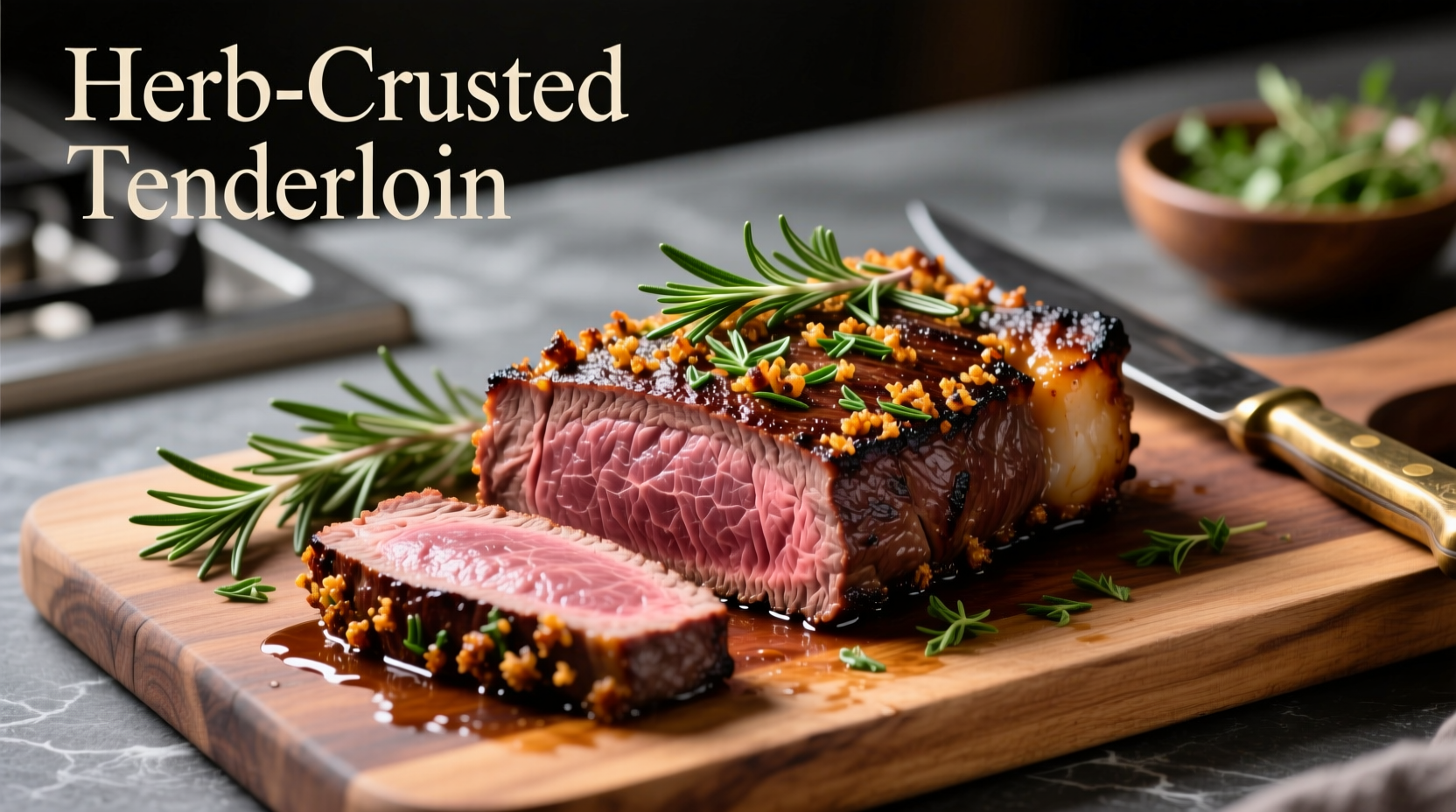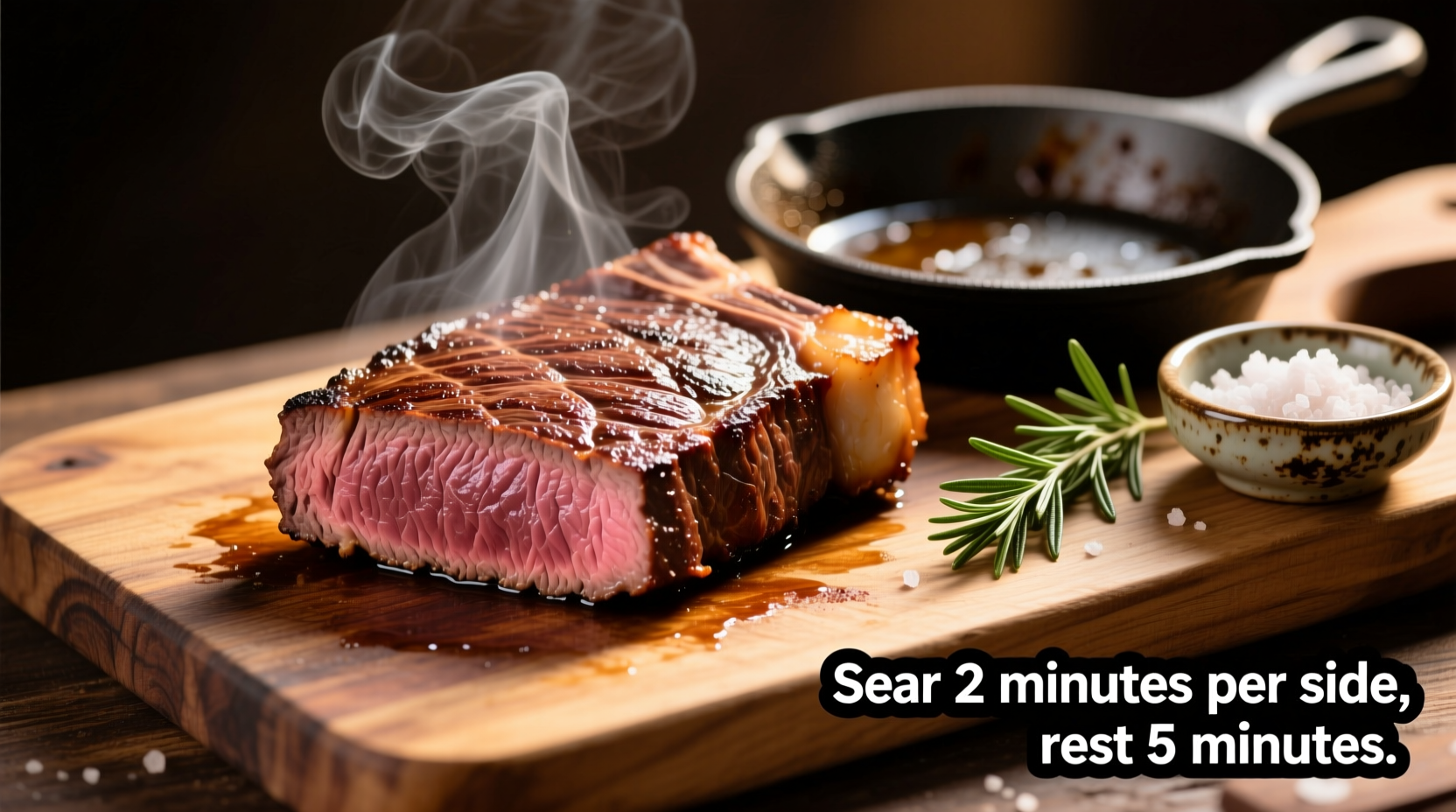Perfectly cooked beef tenderloin requires searing at high heat followed by roasting at 425°F (220°C) for 20-30 minutes until reaching 130-135°F (54-57°C) internal temperature for medium-rare, then resting 15 minutes before slicing. This method ensures a flavorful crust with a tender, evenly cooked interior.
Mastering Beef Tenderloin: Your Complete Cooking Guide
Beef tenderloin represents one of the most premium cuts available, prized for its exceptional tenderness and delicate flavor. When prepared correctly, it transforms into an elegant centerpiece for special occasions. This guide delivers precise techniques developed through professional kitchen experience to help you achieve restaurant-quality results at home.
Why This Method Works Every Time
Unlike other cooking approaches that often result in uneven doneness or dry meat, the sear-and-roast technique creates a flavorful crust while maintaining perfect internal texture. The USDA Food Safety and Inspection Service confirms that cooking beef to 130-135°F (54-57°C) with proper resting time ensures both safety and optimal eating quality for tenderloin cuts.

Essential Preparation Steps
Before you begin cooking, proper preparation makes all the difference:
- Trim excess fat - Remove only large fat deposits, leaving some for flavor
- Pat completely dry - Critical for achieving a proper sear (moisture prevents browning)
- Season generously - Use coarse salt and freshly ground pepper at least 45 minutes before cooking
- Bring to room temperature - Allow 30-45 minutes resting time before cooking for even heat distribution
Step-by-Step Cooking Process
1. Searing for Maximum Flavor
Heat 2 tablespoons of high-smoke-point oil (avocado or grapeseed) in an oven-safe skillet over medium-high heat until shimmering. Sear the tenderloin on all sides until deeply browned, approximately 2-3 minutes per side. This Maillard reaction creates complex flavor compounds essential for restaurant-quality results.
2. Roasting to Perfect Doneness
Transfer the skillet directly to a preheated 425°F (220°C) oven. Roast until the internal temperature reaches your desired level:
| Doneness Level | Internal Temperature | Approximate Cooking Time |
|---|---|---|
| Medium-Rare | 130-135°F (54-57°C) | 20-25 minutes |
| Medium | 140-145°F (60-63°C) | 25-30 minutes |
| Medium-Well | 150-155°F (66-68°C) | 30-35 minutes |
Note: Cooking times vary based on tenderloin size and oven accuracy. Always use a reliable meat thermometer for best results.
3. The Critical Resting Period
Remove the tenderloin from the oven when 5°F below your target temperature. Transfer to a cutting board, tent loosely with foil, and rest for 15 minutes. During this time, the internal temperature will continue rising (carryover cooking), and juices redistribute throughout the meat. Skipping this step results in significant juice loss when slicing.
Common Mistakes to Avoid
Professional kitchens consistently avoid these pitfalls that ruin otherwise perfect tenderloin:
- Overcooking - Tenderloin dries out quickly past medium doneness due to low fat content
- Skipping the sear - Results in bland, boiled-meat texture without complex flavor development
- Cutting too soon - Releases precious juices, creating dry slices
- Incorrect seasoning timing - Salting less than 40 minutes before cooking draws out moisture
When This Method Applies (and When It Doesn't)
This sear-and-roast technique works perfectly for whole beef tenderloin roasts weighing 2-5 pounds. For smaller portions like filet mignon steaks, adjust the method: sear then finish in a 400°F oven for 8-12 minutes depending on thickness. The technique isn't suitable for frozen tenderloin - always thaw completely in the refrigerator before cooking.
The National Cattlemen's Beef Association confirms that dry-heat methods like roasting work best for tenderloin due to its low connective tissue content, unlike tougher cuts requiring moist-heat cooking.
Serving Suggestions for Maximum Impact
Slice the rested tenderloin against the grain into ½-inch thick pieces. Serve with complementary elements that enhance rather than overpower its delicate flavor:
- Classic red wine reduction sauce
- Fresh herb butter (parsley, thyme, rosemary)
- Roasted seasonal vegetables
- Creamy mashed potatoes or polenta
For special occasions, consider truffle butter or compound herb butter placed on warm slices just before serving.
Storing and Reheating Leftovers
Store leftovers in an airtight container in the refrigerator for up to 3 days. To reheat without drying:
- Preheat oven to 275°F (135°C)
- Place slices in a single layer on a baking sheet
- Cover loosely with foil
- Heat for 10-15 minutes until warmed through
Avoid microwaving, which creates uneven heating and rubbery texture. Leftover tenderloin also works beautifully in salads or sandwiches when thinly sliced.











 浙公网安备
33010002000092号
浙公网安备
33010002000092号 浙B2-20120091-4
浙B2-20120091-4